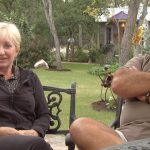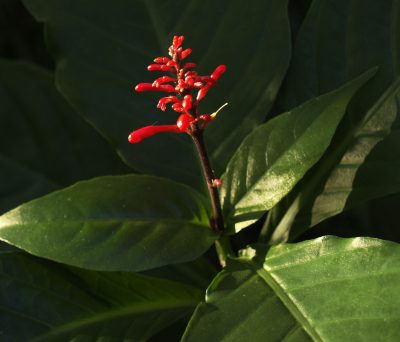What can I plant in late winter? Is it too early for summer plants?
Late winter in Central Texas usually warms up pretty quickly, and summer is right around the corner, but a late-season frost often catches us by surprise. The SOIL temperatures at this time of year are also important. Even if we don’t have any more NIGHTS below freezing, the temperature of the ground is not warm enough yet to set out any warm-season plants.
Winter days are often overcast or cloudy, and the sun is low in the sky so it doesn’t heat the soil the way it does in the summer. So even once the days warm up, if you plant summer annuals or perennials too soon, their tender roots stay too cold and wet and the plants rot.
So, we don’t want to plant summer vegetables like tomatoes, peppers, and squash, or summer annuals like basil, zinnias, euphorbias like ‘Diamond Frost’, Salvia coccineas or pentas.
Wait until mid-March to early April (after the last danger of frost) to plant cold-tender perennials like esperanza, lantana, firespike, citrus, and plumbago. Once established, many of these plants are just fine in winter. But if we get a serious nip while they are young and tender, we can lose them. It’s okay to plant cold-hardy agaves, manfredas (or mangaves), yuccas and cactus. Ask at the nursery if you’re not sure.
Certainly avoid planting any summer tropical plant like bougainvillea or mandevilla or bringing their pots outside just yet. Wait until after the last frost date to plant fountain grasses or other pennisetums.
But since our soil here in Central Texas never even comes close to freezing, we are lucky enough to be able to plant in late winter; which is a good thing, since we start to warm up and get bitten by spring fever a little earlier than the rest of the nation. Winter annuals like pansies are great for a spot of color in late winter. You may only get a couple of months out of them before it’s time to pull them out and replace them, but an entire flat is cheap enough that it’s worth it.
The same may be said for cool-season vegetables and herbs, and there’s even more variety to choose from here. Cabbage, kale, broccoli, cauliflower, collards, and Swiss chard should still be easy enough to find in local nurseries. You may not get a crop of vegetables from these plants, but they’ll look nice in your garden, and get you over the hump until it’s time to plant more heat-loving choices.
Cool season herbs will last a little longer than cool season vegetables if planted now. Cilantro, dill, fennel, garlic chives, horse radish, and parsley will give you several months of harvest time before they start to peter-out.
And herbs such as lemon balm and summer savory, which may also be planted now, will even last into the summer. You can also plant rosemary, oregano, and thyme.
And although they may not give much instant gratification, since they’re leafless and will remain dormant for a while yet, it’s still a great time to plant fruit and nut trees. In fact, if you’re planning to put any new trees in the landscape, don’t delay. They’ll really benefit from the small window of cool weather that we have left ahead, before they’re forced to deal with the reality of a Texas summer.
Late winter is an excellent time to plant shrubs, roses, and perennials like columbine, salvias, native clumping grasses, wildflower transplants, and other native perennials.








 Dani Moss
Dani Moss Liz Klein
Liz Klein Daphne Richards
Daphne Richards
 Trisha Shirey
Trisha Shirey